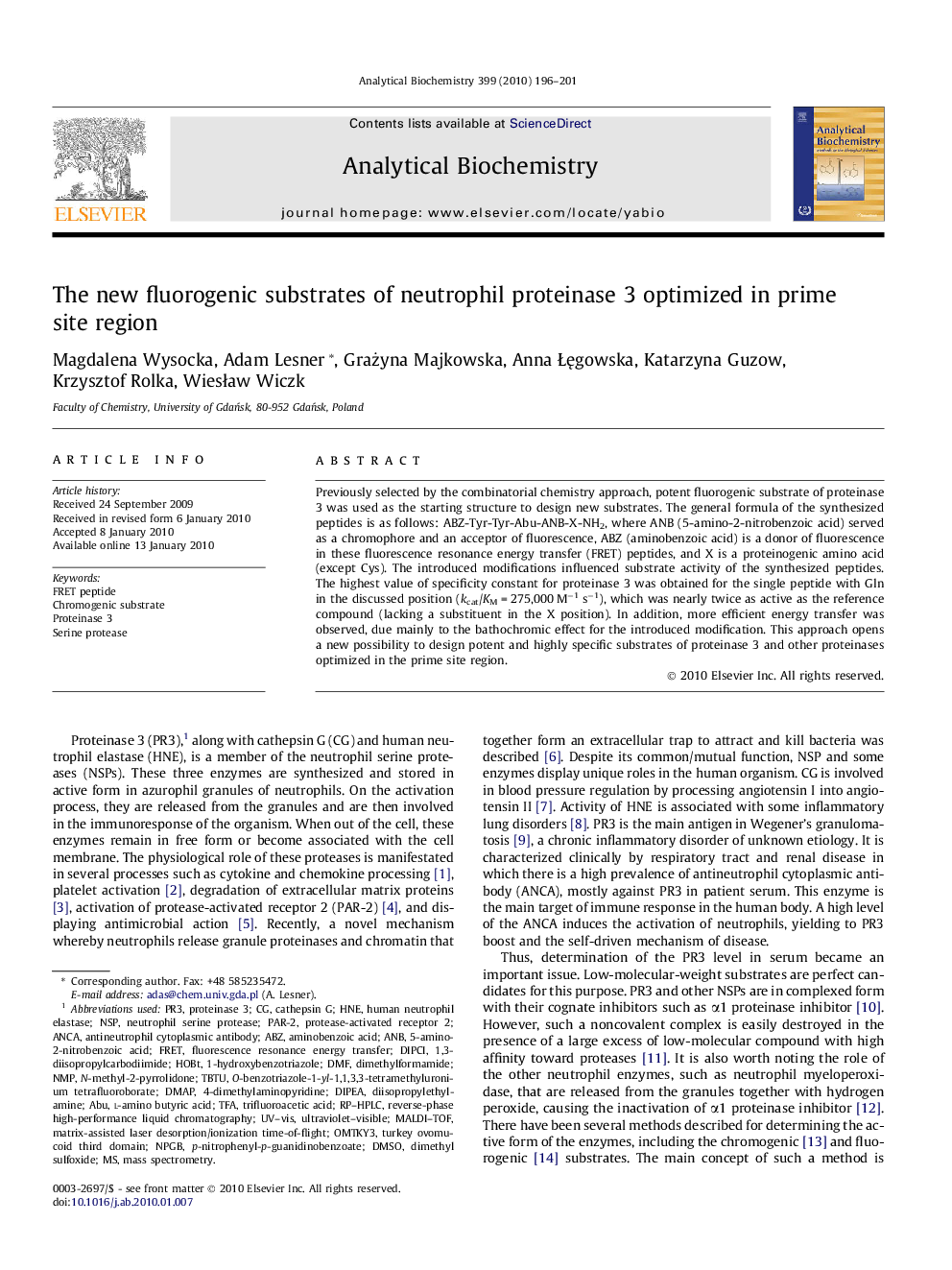| Article ID | Journal | Published Year | Pages | File Type |
|---|---|---|---|---|
| 1175208 | Analytical Biochemistry | 2010 | 6 Pages |
Previously selected by the combinatorial chemistry approach, potent fluorogenic substrate of proteinase 3 was used as the starting structure to design new substrates. The general formula of the synthesized peptides is as follows: ABZ-Tyr-Tyr-Abu-ANB-X-NH2, where ANB (5-amino-2-nitrobenzoic acid) served as a chromophore and an acceptor of fluorescence, ABZ (aminobenzoic acid) is a donor of fluorescence in these fluorescence resonance energy transfer (FRET) peptides, and X is a proteinogenic amino acid (except Cys). The introduced modifications influenced substrate activity of the synthesized peptides. The highest value of specificity constant for proteinase 3 was obtained for the single peptide with Gln in the discussed position (kcat/KM = 275,000 M−1 s−1), which was nearly twice as active as the reference compound (lacking a substituent in the X position). In addition, more efficient energy transfer was observed, due mainly to the bathochromic effect for the introduced modification. This approach opens a new possibility to design potent and highly specific substrates of proteinase 3 and other proteinases optimized in the prime site region.
